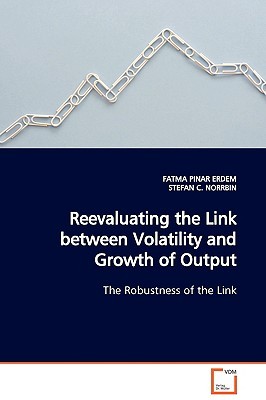
- We will send in 10–14 business days.
- Author: Fatma Pinar Erdem
- Publisher: VDM Verlag
- ISBN-10: 3639123867
- ISBN-13: 9783639123869
- Format: 15.2 x 22.9 x 0.6 cm, softcover
- Language: English
- SAVE -10% with code: EXTRA
Reevaluating the Link between Volatility and Growth of Output (e-book) (used book) | bookbook.eu
Reviews
Description
Until the 1980s, short-run economic fluctuations and growth were viewed as separate processes. However, recent studies suggest that short-run fluctuations might influence the growth. This new view supports the existence of a link between volatility and growth of output, which is important for policy makers as high economic growth and reducing business cycle volatility might either be viewed as complementary policy goals or as tradeoffs. This book aims to provide a better understanding of the link between volatility and growth. The link is examined using three samples of countries over different time periods. The robustness of the link to different choices of time and samples is tested but we fail to find a robust link. Therefore, an alternative method is used that allows volatility and growth to vary over time. The estimations with the alternative method give a strong negative link between volatility and growth. This finding is important for policy makers, as a policy that reduces business cycle volatility, is also helpful for increasing long run growth. This book appeals to students, professors and researchers who are interested in economic growth and applied macroeconomics.
EXTRA 10 % discount with code: EXTRA
The promotion ends in 17d.17:16:00
The discount code is valid when purchasing from 10 €. Discounts do not stack.
- Author: Fatma Pinar Erdem
- Publisher: VDM Verlag
- ISBN-10: 3639123867
- ISBN-13: 9783639123869
- Format: 15.2 x 22.9 x 0.6 cm, softcover
- Language: English English
Until the 1980s, short-run economic fluctuations and growth were viewed as separate processes. However, recent studies suggest that short-run fluctuations might influence the growth. This new view supports the existence of a link between volatility and growth of output, which is important for policy makers as high economic growth and reducing business cycle volatility might either be viewed as complementary policy goals or as tradeoffs. This book aims to provide a better understanding of the link between volatility and growth. The link is examined using three samples of countries over different time periods. The robustness of the link to different choices of time and samples is tested but we fail to find a robust link. Therefore, an alternative method is used that allows volatility and growth to vary over time. The estimations with the alternative method give a strong negative link between volatility and growth. This finding is important for policy makers, as a policy that reduces business cycle volatility, is also helpful for increasing long run growth. This book appeals to students, professors and researchers who are interested in economic growth and applied macroeconomics.


Reviews